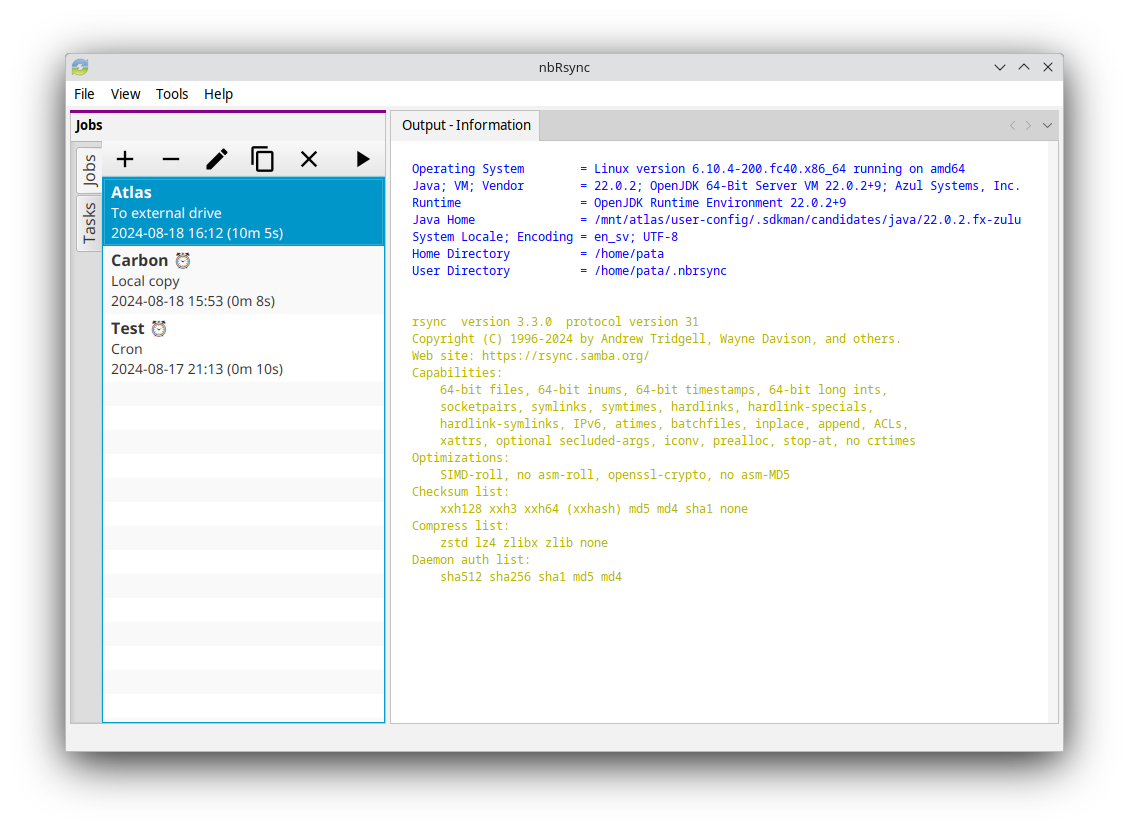
nbrsync

nbRsync is a GUI for rsync that simplifies synchronization of files and directories while preserving the details of the rsync options.
nbRsync works with the concept of Jobs and Tasks. Jobs can contain zero or more Tasks and Tasks can belong to zero or more Jobs.
It is possible to execute commands before and after jobs and tasks.
nbRsync also comes with a built-in scheduler, a scheduler that has to be started from the command line.
GitHub Download nbrsync Website nbrsync Bugtracker Donate
Usage
nbrsync is available as an AppImage which means "one app = one file", which you can download and run on your Linux system while you don't need a package manager and nothing gets changed in your system. Awesome!
AppImages are single-file applications that run on most Linux distributions. Download an application, make it executable, and run! No need to install. No system libraries or system preferences are altered. Most AppImages run on recent versions of Arch Linux, CentOS, Debian, Fedora, openSUSE, Red Hat, Ubuntu, and other common desktop distributions.
Running nbrsync on Linux without installation
Unlike other applications, AppImages do not need to be installed before they can be used. However, they need to be marked as executable before they can be run. This is a Linux security feature.Beware! AppImages are usually not verified by others. Follow these instructions only if you trust the developer of the software. Use at your own risk!
Download the nbrsync AppImage and make it executable using your file manager or by entering the following commands in a terminal:
chmod +x ./*.AppImageThen double-click the AppImage in the file manager to open it.
Sandboxing nbrsync
If you want to restrict what nbrsync can do on your system, you can run the AppImage in a sandbox like Firejail. This is entirely optional and currently needs to be configured by the user.
Updating nbrsync
If you would like to update to a new version, simply download the new nbrsync AppImage.
Integrating AppImages into the system
If you would like to have the executable bit set automatically, and would like to see nbrsync and other AppImages integrated into the system (menus, icons, file type associations, etc.), then you may want to check the optional appimaged daemon.
Note for application authors
Thanks for distributing nbrsync in the AppImage format for all common Linux distributions. Great! Here are some ideas on how to make it even better.
Pro Tips for further enhancing the nbrsync AppImage
Please consider to add update information to the nbrsync AppImage and ship a .zsync file so that it can be updated using AppImageUpdate. Tools like appimagetool and linuxdeployqt can do this for you easily.
Thanks for shipping AppStream metainfo inside your AppImage. Please open a pull request on https://github.com/AppImage/appimage.github.io/blob/master/data/nbrsync if you have changed it and would like to see this page updated accordingly.
